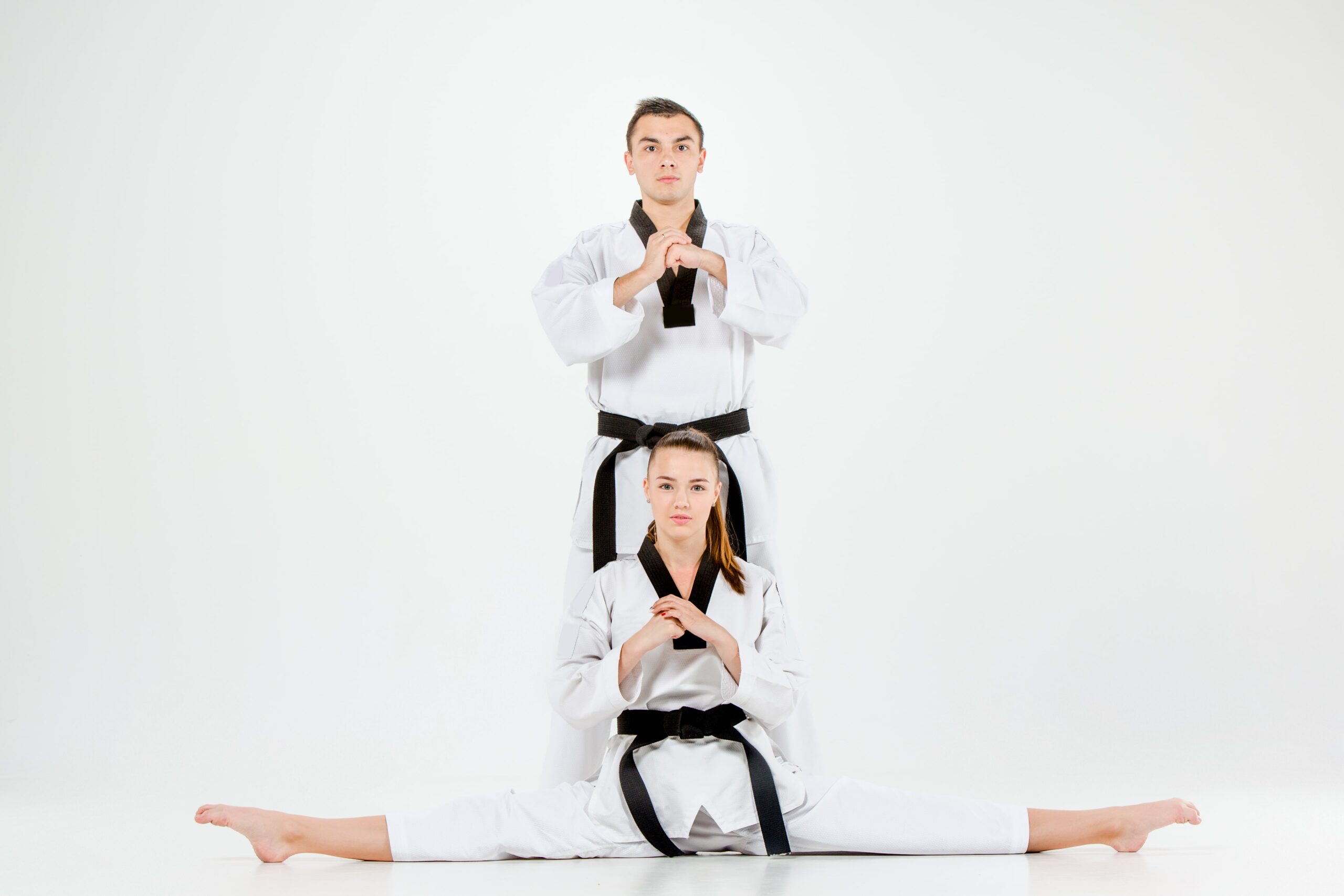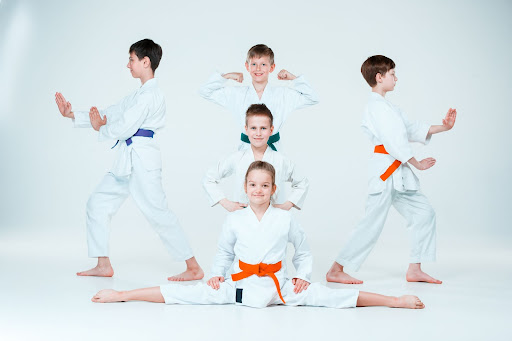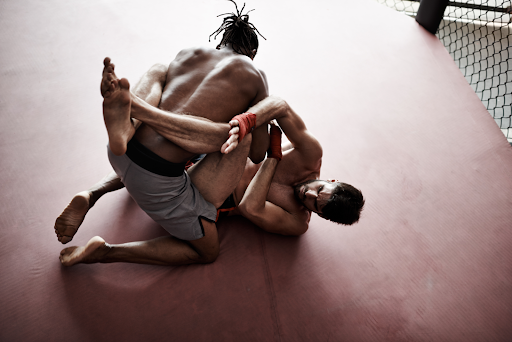Posted Jan 23rd, 2024
Freestyle wrestling is a captivating sport that offers an ideal blend of physical prowess, technical precision, and strategic thinking. As with any combat sport, success in wrestling requires mastering several foundational techniques.
As an Olympic sport, Freestyle Wrestling has evolved into a highly organized discipline with set rules, scoring, and techniques. Three crucial components of this historic sport are takedowns, throws, and pins. Let’s take a detailed look at each one and the most common techniques used for scoring points in competition.
Takedowns are vital for scoring points and establishing dominance over your opponent. Here are some essential techniques:
Single Leg Takedown: This involves capturing one of your opponent’s legs between your arms, lifting, then using various techniques to bring them down. Proper head positioning is crucial to avoid being countered.
Double Leg Takedown: This technique involves diving in and capturing both legs of your opponent, then driving forward to take them to the mat. Speed, timing, and commitment are critical to successfully executing this takedown.
Ankle Pick: By faking an upper-body move and quickly dropping to grab your opponent’s ankle, this move catches them off guard, making it easier to off-balance and takedown.
To master takedowns, one should focus on stance, motion, penetration, and finishing techniques. Agility drills and sparring can help wrestlers improve their takedown timing and execution.
Throws in freestyle wrestling are not just visually impressive; they can also earn a wrestler significant points. Some fundamental throws include:
Hip Toss: By positioning your hip below your opponent’s center of gravity and using leverage, you can effectively throw them over your body.
Headlock Throw: By securing a headlock and leveraging your opponent’s momentum, this throw lands your opponent onto their back.
Suplex: This technique requires a tight grip around your opponent’s waist. The aim is to lift them off the ground and arch your back, throwing them overhead onto the mat.
Developing throw techniques demands understanding of leverage and balance. It’s essential to have a skilled partner to practice with, ensuring that both participants understand the mechanics and safety precautions associated with each throw.
Once your opponent is on the mat, the goal shifts to maintaining control and working towards a pin. Here’s how:
Half-Nelson: One of the most classic pinning combinations. It involves slipping one arm under your opponent’s arm and placing your hand on the back of their neck, forcing their shoulder blades onto the mat.
Cradle: By wrapping your arms around your opponent’s head and knee, you create a lock that can be used to pin them.
Arm Bar: This technique requires trapping your opponent’s arm and leveraging it to turn them onto their back.
To perfect pins, regular drilling is essential. Wrestlers should be persistent and patient, learning to sense when an opponent is off-balance or exposed to a pinning opportunity.
Mastering the techniques in freestyle wrestling is a journey that requires dedication, patience, and consistent practice. Whether you’re working on takedowns, throws, or pins, remember that each technique is an art form in itself. The most successful wrestlers are those who combine strength with strategy, understanding the mechanics and nuances of each move. So, put on your wrestling shoes, find a good sparring partner, and start honing your skills today!
If you’re looking for the perfect locale location to perfect your freestyle wrestling technique, look no further than Etobicoke Martial Arts. Our dedicated team of world-class, professional instructors will guide you through the entire process of mastering takedowns, throws, and pins.

Posted Jan 5th, 2024
Only some people are fans of setting traditional New Year’s resolutions. Some prefer to shy away from the trend, while others find it challenging to stick with their resolutions beyond the first few weeks. However, the arrival of a new year brings the opportunity to set fresh goals for improving your fitness, health, and overall lifestyle, regardless of whether you label them as resolutions.
If you’re searching for an activity that not only gets you moving but also fosters positive lifestyle habits, or if you’re looking for a fun, family-oriented pursuit, martial arts offers many benefits to help you achieve these personal goals and more. Whether considering martial arts for the first time or contemplating a return to regular practice, the start of a new year is the perfect moment to dive in.
Here are seven compelling reasons why martial arts should top your list of New Year’s pursuits:
Martial arts classes provide a secure and structured environment for acquiring essential self-defence skills. If safety concerns have been holding you back, rest assured that learning from experienced instructors in well-organized classes is the surest way to ensure your protection.
Beyond the physical skills, martial arts training empowers you with newfound self-confidence. It’s about feeling secure and self-assured in all aspects of your life.
Committing to a martial arts practice promises a remarkable transformation in your overall fitness. You’ll experience endurance, strength, speed, agility, flexibility, power, and balance improvements.
If your current exercise routine has become monotonous, martial arts provides a dynamic change of pace. You’ll explore new movements, challenge your body and mind, and embark on a journey to master new skills.
Beginning your martial arts journey in the new year opens doors to new friendships and connections. Don’t let nervousness or intimidation hold you back; the martial arts community is renowned for its inclusivity, filled with individuals who share your passion for growth and self-improvement.
Seeking an outlet for stress? Martial arts offers a structured and enjoyable way to alleviate stress while providing a full-body workout that promotes mental and physical well-being.
Unlike fleeting trends and fads that often lose their appeal within the first few weeks, making martial arts your New Year’s resolution is a commitment you can maintain indefinitely. It’s not just a short-lived goal but a sustainable lifestyle choice encouraging ongoing personal development.
So, whether you’re enthusiastic about resolutions or simply eager to enrich your life in 2024, martial arts stands as a versatile and fulfilling path to consider. It’s time to level your well-being, master new skills, and join a supportive community. Your martial arts journey begins now, an adventure you’ll cherish forever.

Posted Oct 20th, 2023
In our vibrant city of Etobicoke, Toronto, martial arts enthusiasts have a plethora of options to choose from. With numerous schools offering a diverse range of disciplines, finding the perfect fit can be a daunting task. To help you navigate this exciting journey, Etobicoke Martial Arts presents five essential tips to ensure you find the right martial arts school.
Before embarking on your search, take a moment to reflect on your motivations and aspirations:
What do you hope to achieve through martial arts training?
Are you seeking self-defense skills, improved fitness, or a sense of discipline and focus?
Identifying your goals will help narrow down your options and steer you towards schools that align with your objectives.
The world of martial arts is vast and diverse, offering a variety of styles to suit different preferences and needs. From the dynamic strikes of karate to the graceful movements of tai chi, each discipline has its unique philosophy and techniques. Research various martial arts styles to discover one that resonates with your interests and personality.
Our programs include styles like Brazilian Jiu Jitsu, Muay Thai, Wrestling, MMA, Boxing and Kids martial arts.
Schedule trial classes at potential schools to experience the firsthand atmosphere and teaching methods. Observe the instructor’s interaction with students, the level of respect and camaraderie within the class, and the overall energy and enthusiasm. A positive and supportive environment is crucial for effective learning and enjoyment.
Inquire about the instructor’s credentials, experience, and training background. A qualified instructor should possess a deep understanding of the martial art they teach, demonstrate proficiency in techniques, and have a proven track record of success in guiding students.
Accessibility and convenience play a significant role in ensuring consistent training. Choose a school that is conveniently located and offers class times that fit your schedule. Regular practice is essential for progress, so ensure you can commit to the school’s schedule.
Finding the right martial arts school is a personal journey that requires careful consideration of your goals, preferences, and lifestyle. By following these five tips, you can confidently navigate the options available in your city, and discover the perfect school to embark on your martial arts journey. Remember, Etobicoke Martial Arts is always here to guide you and support your aspirations in the world of martial arts.

Posted Sep 21st, 2023
Mixed Martial Arts (MMA) and Brazilian Jiu-Jitsu (BJJ) are two of the most popular and respected fighting disciplines in the world. While they do share some commonalities, they also have unique qualities and characteristics that make them distinct.
If you’re considering diving into the world of martial arts and are trying to decide between these two, this article is for you. We’ll compare MMA and BJJ in terms of their techniques, training methods, fitness benefits, and competition settings to help you determine which one aligns more with your personal goals and preferences.
MMA: As the name suggests, MMA is a mix of various martial arts, bringing together striking arts (like boxing and Muay Thai) and grappling arts (like wrestling and BJJ). This means that an MMA fighter needs to be proficient both standing up and on the ground.
BJJ:BJJ primarily focuses on ground fighting. It’s about using leverage and technique to submit your opponent via locks and chokes, making it possible for a smaller, weaker person to defeat a bigger, stronger opponent.
MMA:MMA training is diverse. You might find yourself boxing one day, working on your kickboxing the next, and grappling the day after. This variety can make MMA training very engaging, but it also means you’re spreading your attention across multiple disciplines.
BJJ: In BJJ, the emphasis is on drilling techniques, positional sparring, and rolling (a form of sparring where participants try to submit each other). The focus is narrower, allowing practitioners to delve deeply into the nuances of ground combat.
MMA:MMA provides a full-body workout. The combination of striking and grappling ensures you’re constantly moving, boosting cardiovascular endurance, flexibility, strength, and agility. It’s an intense workout, suitable for those looking to push their limits.
BJJ: While BJJ is also a comprehensive workout, it emphasizes endurance, flexibility, and core strength. The slow-paced and methodical nature of BJJ means it can be less intense than an MMA session, but don’t be fooled — it’s still a tough workout, especially when rolling at higher intensities.
MMA: MMA competitions are multifaceted, with fighters using strikes, takedowns, and submissions to win. Fights can be won via knockout, technical knockout, submission, or judges’ decision. MMA fights are held inside a cage or a ring, and the objective is to incapacitate your opponent or dominate them enough to get a favorable decision.
BJJ: Competitions in BJJ are about gaining points through positional control or winning outright with a submission. Strikes are not allowed. Matches can be won by accumulating points, submission, or referees’ decision. There’s also a strong emphasis on weight classes and belt levels, ensuring fair matchups.
If you love variety: MMA offers a broader spectrum of techniques, combining elements from striking and grappling arts. This can be appealing if you enjoy learning a mix of styles.
If you’re concerned about safety: While injuries can happen in any sport, BJJ generally has fewer risks associated with strikes to the head. BJJ is more about control and technique, whereas MMA incorporates powerful strikes that can lead to knockouts.
If you prefer specialization: BJJ allows you to dive deeply into the world of grappling. It’s a chess game on the mat, where strategy, technique, and patience are vital.
If you seek full-contact competition: MMA is about as close as you can get to a real-life self-defense situation, testing both your striking and grappling under pressure.
In conclusion, both MMA and BJJ offer unique experiences, challenges, and benefits. Your choice depends on your interests, fitness goals, and how you envision your martial arts journey.
Some people even choose to train for both simultaneously, enjoying the best of both worlds. Regardless of your choice, both disciplines foster respect, discipline, and continuous learning — values that are beneficial in and out of the dojo.
If you are curious to learn more about either MMA or BJJ, Etobicoke Martial Arts is your local martial arts training center, providing world-class martial arts instruction in Etobicoke, and serving Toronto, and the wider GTA. Our instructors are specialists in their disciplines, and can give you the rundown on all there is to know about the difference between MMA and BJJ and so much more!
©2024 ETOBICOKEMARTIALARTS. All Rights Reserved.